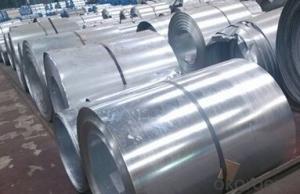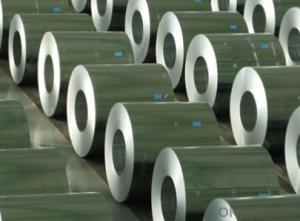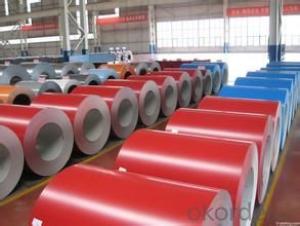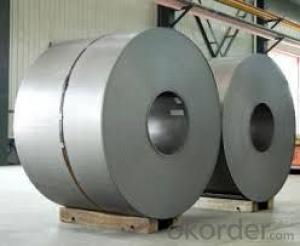Hot-dip Aluzinc Steel ASTM 615 SPCCH SPCC JIS3302
- Loading Port:
- Shanghai
- Payment Terms:
- TT OR LC
- Min Order Qty:
- 65665 m.t.
- Supply Capability:
- 2323 m.t./month
OKorder Service Pledge
OKorder Financial Service
You Might Also Like
1. Description of the Hot-dip Aluzinc Steel:
Hot-dip aluzinc steel structure is composed of aluminum-zinc alloy, consisting of 55% aluminum, 43% zinc and 2% at 600 ℃ silicon solidification temperature and composition, the entire structure is made of aluminum - iron - silicon - zinc, to form a dense quaternary crystals an alloy.
Hot-dip aluzinc steel has many excellent features: strong corrosion resistance, is three times the pure galvanized sheet; zinc surface with beautiful flowers, can be used as a building outside board.
Applications of hot-dip aluzinc steel:
1)Building: roof, walls, garages, soundproof walls, pipes and modular housing.
2)Automotive: muffler, exhaust pipes, wiper accessories, fuel tank, truck boxes, etc.
3)Appliances: refrigerator back, gas stove, air conditioners, microwave oven, LCD frame, 4)CRT-proof band, LED backlight, electrical cabinets, etc.
5)Farm: barn, sheds, silos, piping and other greenhouse.
6)Other: breaking heat insulation cover, heat exchangers, dryers, warm water, etc.
2.Main Features of the Hot-dip Aluzinc Steel:
• Excellent corrosion resistance
• High temperature oxidation resistance
• High hot reflectance
• Good manufacturability
•Beautiful appearance
•Surface coating
•Cost-effective
3.Hot-dip Aluzinc Steel Images

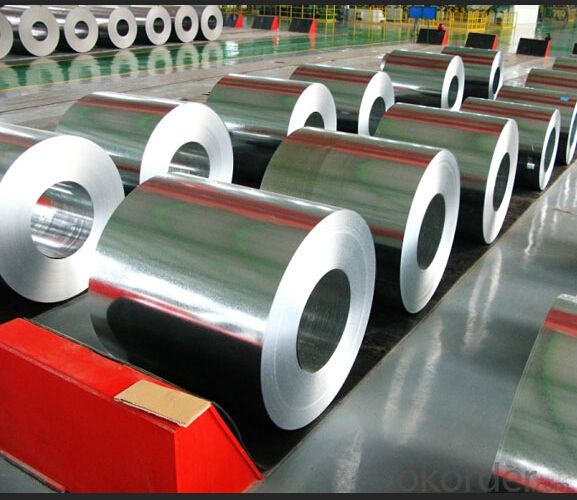
4.Hot-dip Aluzinc Steel Specification
AVAILABLE SPECIFICATION
HOT-DIP ALUZINC STEEL COILS | |
THICKNESS | 0.16mm-3.5mm |
WIDTH | 1250mm MAX |
COATING MASS | |
SPANGLE | Regular Spangle, Minimized Spangle, Zero Spangle |
SURFACE TREATMENT | Chromated / non-chromated, Oiled / non-oiled, Anti Finger Print |
COIL INNER DIAMETER | 508mm or 610mm |
HOT-DIP ALUZINC STEEL COILS | |||
COMMERCIAL QUALITY | ASTM A792M-06a | EN10327-2004 | JIS G 3321:2010 |
STRUCTURE STEEL | SS GRADE 230 SS GRADE 255 SS GRADE 275 SS GRADE 340 SS GRADE 550 | S250GD+AZ S280GD+AZ S550GD+AZ | SGLC440 SGLC490 SGLC570 |
5.FAQ of Hot-dip Aluzinc Steel
We have organized several common questions for our clients,may help you sincerely:
1.What advantages does your company have?
Cement : Annual capacity of 400 million tons, No. 1 in the world
Fiberglass: Annual capacity of 1 million tons fiberglass, No. 1 in the world.
Composite Materials — Carbon Fiber: Annual capacity of 10,000 tons PAN precursor and 4,000 tons carbon fiber, No. 1 in China
Composite Materials — Rotor Blade: Annual production capacity of 15,000 pieces, No.1 in China, Top3 worldwide
Glass: CNBM owns about 20 modern float glass product`ion lines, With annual capacity of 10 million square meters glass.
Light Weight Building Materials: Annual capacity of 1.65 billion square meters of gypsum board, No. 1 in the world.
Commercial concrete: Annual capacity of 0.35 billion cubic meters, No. 1 in the world.
Refractory Material: Annual capacity of 40,000 tons casting refractory, No.1 in the world.
2.What advantages do your products have?
Firstly, our base material is of high quality, Their performance is in smooth and flat surface,no edge wave ,good flexibility.
Secondly, high quality zinc ingoats, 97.5% zinc,1.5% silicon,1% others, the same zinc coating measured by metal coating thickness or by zinc weight
Thirdly, high precision: Tolerance strictly according to ASTM or JISG standard even more rigid.
We have full stes of testing equipment(for t best, cupule,chromatism,salt spray resistance, etc) and professional engineers.
3.Could you let me approach about your company in Dubai?
Located at Jebel Ali Free Zone in Dubai, CNBM Dubai Logistics Complex is adjacent to -Jebel Ali sea port-the largest port in UAE and Al Maktoum Airport-the largest airport in the world, which covers an area of 50,000 square meters, including an fully enclosed warehouse by 10,000 square meters, an open yard by 25000 square meters, and 13 standard unloading platform. CNBM Dubai Logistics Complex formally put into operation on August 1, 2013. Dubai Logistics Complex will commit itself to build the most professional and most influential building materials distribution center of China’s building materials industry in the UAE and throughout the Middle East and Africa.
- Q:What is the typical impact strength of a steel sheet?
- The typical impact strength of a steel sheet can vary depending on the grade and thickness of the steel. However, steel sheets generally have high impact strength due to their tough and durable nature.
- Q:What are the advantages of using galvanized steel sheets?
- Using galvanized steel sheets in various applications offers several advantages. Firstly, they exhibit high resistance to corrosion. The process of galvanizing involves applying a zinc layer to the steel sheets, which acts as a protective barrier against rust and other forms of corrosion. This makes galvanized steel sheets ideal for outdoor applications or environments that are prone to moisture, like construction sites or coastal areas. Secondly, galvanized steel sheets possess excellent durability and longevity. The zinc coating enhances their overall strength and resistance to wear and tear. Consequently, galvanized steel sheets can withstand heavy loads, extreme temperatures, and other harsh conditions, making them suitable for long-term use. Moreover, galvanized steel sheets prove to be cost-effective. Though the initial cost may be slightly higher compared to other materials, their long lifespan and low maintenance requirements offset this investment. Galvanized steel sheets do not require frequent painting or sealing, saving both time and money in the long run. Furthermore, galvanized steel sheets are environmentally friendly. The zinc coating used in the galvanizing process is recyclable, contributing to sustainable practices. Additionally, the extended lifespan of galvanized steel sheets reduces the need for frequent replacements, minimizing waste and conserving resources. Lastly, galvanized steel sheets offer versatility in terms of applications. They can be easily formed, shaped, and cut to meet specific requirements, making them suitable for a wide range of industries, including construction, automotive, and manufacturing. The ability to customize galvanized steel sheets ensures their compatibility with various designs and structural needs. In conclusion, the benefits of using galvanized steel sheets encompass superior corrosion resistance, durability, cost-effectiveness, environmental friendliness, and versatility. These advantages make galvanized steel sheets a favored choice across numerous industries and applications.
- Q:What is the process of etching or engraving on steel sheets?
- The process of etching or engraving on steel sheets involves using various techniques to create designs or patterns on the surface of the steel. Typically, a design is either etched or engraved onto a protective coating applied on the steel sheet using chemicals, tools, or lasers. The protective coating is then removed, revealing the etched or engraved design on the steel surface. This process is commonly used in industries such as manufacturing, jewelry making, and metal art.
- Q:How do steel sheets compare to galvanized sheets?
- Steel sheets and galvanized sheets are both widely used in various industries and applications, but there are some key differences between the two that make them suitable for different purposes. Steel sheets are made from a low carbon steel that is strong and durable. They can be used in a wide range of applications, including construction, automotive manufacturing, and fabrication. Steel sheets are available in different grades and thicknesses, allowing for versatility in their use. They offer excellent strength and are resistant to corrosion when properly maintained. On the other hand, galvanized sheets are steel sheets that have been coated with a layer of zinc through a process called galvanization. This coating provides a protective barrier against corrosion and extends the lifespan of the sheet. Galvanized sheets are commonly used in outdoor applications where exposure to moisture and harsh weather conditions is a concern, such as roofing, fencing, and outdoor signage. Compared to steel sheets, galvanized sheets have a higher resistance to corrosion and tend to last longer in outdoor environments. However, they may not be as strong as steel sheets and can be more expensive due to the galvanization process. Galvanized sheets also have a characteristic shiny appearance due to the zinc coating, which can give a more aesthetically pleasing finish. In summary, steel sheets are strong, versatile, and suitable for various applications, while galvanized sheets offer superior corrosion resistance and are ideal for outdoor use. The choice between the two ultimately depends on the specific requirements of the project, taking into account factors such as strength, durability, corrosion resistance, and budget.
- Q:What are the common applications of hot-rolled steel sheets?
- Hot-rolled steel sheets are commonly used in a variety of applications due to their strength, durability, and versatility. Some of the common applications include construction projects such as building frames, bridges, and infrastructure. They are also used in manufacturing machinery, automotive components, pipelines, and storage tanks. Additionally, hot-rolled steel sheets find their place in the production of appliances, furniture, and even everyday household items.
- Q:Can steel sheets be used for construction formwork or molds?
- Yes, steel sheets can be used for construction formwork or molds. Steel sheets are durable, strong, and can withstand the pressure and weight of concrete during construction. They provide a sturdy and reliable surface for shaping and supporting the concrete, making them suitable for use in construction formwork or molds.
- Q:What is the difference between a galvanized and aluminum steel sheet?
- A galvanized steel sheet is made from carbon steel that has been coated with a layer of zinc to protect it from corrosion. This process, known as galvanization, involves immersing the steel sheet in a bath of molten zinc, which forms a protective layer on the surface. Galvanized steel sheets are known for their durability, as the zinc coating acts as a barrier against moisture, chemicals, and other corrosive elements. They are commonly used in construction, automotive, and industrial applications. On the other hand, an aluminum steel sheet is made from aluminum, which is a lightweight and corrosion-resistant metal. Aluminum sheets are manufactured by rolling aluminum ingots into thin sheets of varying thicknesses. They offer excellent corrosion resistance, even without additional coatings or treatments. Aluminum sheets are commonly used in aerospace, transportation, and architectural applications. In terms of differences, the main distinction between galvanized and aluminum steel sheets lies in their composition and protective properties. Galvanized steel sheets have a zinc coating, which provides superior corrosion resistance compared to bare carbon steel. This makes them more suitable for outdoor and high-moisture environments. Additionally, galvanized steel sheets can be easily welded and painted, offering more versatility in terms of customization. On the other hand, aluminum steel sheets have inherent corrosion resistance due to the presence of aluminum. They are lighter in weight than galvanized steel sheets, making them more suitable for applications where weight reduction is a priority. Aluminum sheets also have better thermal conductivity and reflectivity properties, making them ideal for applications involving heat dissipation or insulation. In summary, galvanized steel sheets are carbon steel sheets coated with a layer of zinc for enhanced corrosion resistance, while aluminum steel sheets are made from aluminum and offer inherent corrosion resistance. The choice between galvanized and aluminum steel sheets depends on the specific requirements of the application, such as the level of corrosion protection needed, weight considerations, and thermal properties desired.
- Q:Can steel sheets be used in HVAC applications?
- Yes, steel sheets can be used in HVAC applications. Steel sheets are commonly used in HVAC systems for various purposes such as ductwork, ventilation, and fabrication of components like air handling units and heat exchangers. Steel offers excellent strength, durability, and resistance to corrosion, making it suitable for these applications.
- Q:Can steel sheets be welded or joined together?
- Indeed, it is possible to weld or join steel sheets together. The process of welding is widely employed to achieve this purpose. It entails the melting of the sheet edges, followed by their subsequent cooling and solidification. This results in a robust connection between the two sheets. Welding proves to be an efficient means of joining steel sheets due to its ability to withstand substantial levels of stress and load. Moreover, depending on the specific needs and application, alternative techniques like riveting, bolting, and adhesive bonding can also be utilized to join steel sheets.
- Q:How do steel sheets perform in extreme weather conditions?
- Steel sheets perform well in extreme weather conditions due to their durability and resistance to temperature variations, strong winds, heavy rainfall, and snow. They do not warp or crack easily, providing protection against harsh elements. Additionally, steel sheets have high corrosion resistance, making them suitable for areas prone to humidity or saltwater exposure.
1. Manufacturer Overview |
|
|---|---|
| Location | |
| Year Established | |
| Annual Output Value | |
| Main Markets | |
| Company Certifications | |
2. Manufacturer Certificates |
|
|---|---|
| a) Certification Name | |
| Range | |
| Reference | |
| Validity Period | |
3. Manufacturer Capability |
|
|---|---|
| a)Trade Capacity | |
| Nearest Port | |
| Export Percentage | |
| No.of Employees in Trade Department | |
| Language Spoken: | |
| b)Factory Information | |
| Factory Size: | |
| No. of Production Lines | |
| Contract Manufacturing | |
| Product Price Range | |
Send your message to us
Hot-dip Aluzinc Steel ASTM 615 SPCCH SPCC JIS3302
- Loading Port:
- Shanghai
- Payment Terms:
- TT OR LC
- Min Order Qty:
- 65665 m.t.
- Supply Capability:
- 2323 m.t./month
OKorder Service Pledge
OKorder Financial Service
Similar products
New products
Hot products
Hot Searches
Related keywords

